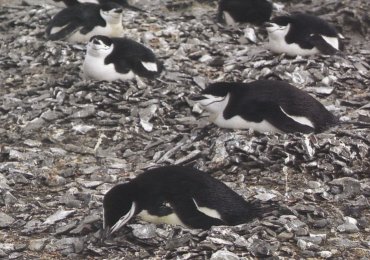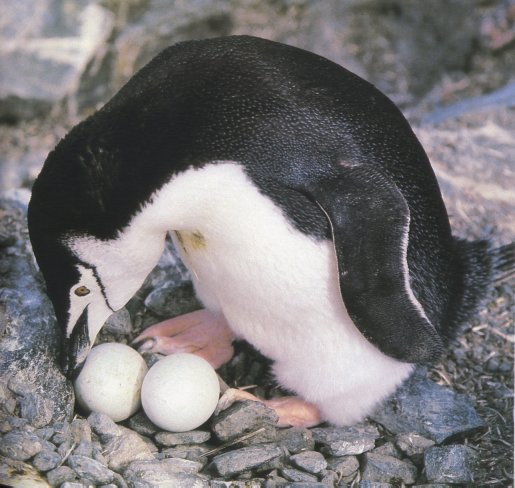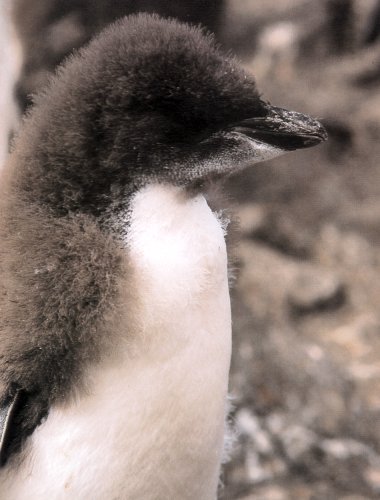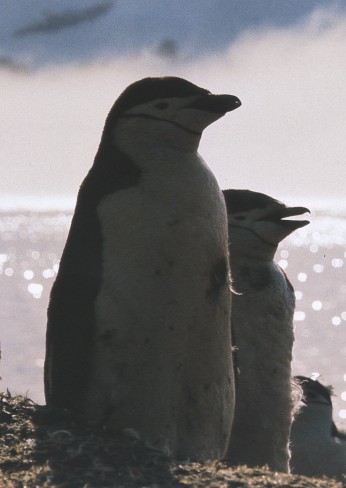Introduction | Gallery | Videos & Audios Name: Chinstrap Penguin Scientific Name: Pygoscelis antarctica Size: 26-30 inches (68-77 cm) Where they live: Bouvet Island Why is it called: A narrow black line on the head of Chinstrap penguins, like a strap keeping the black cap in place. In October and November, the male penguin returned from the sea and find the best place to build nests. After the females come, she finds her mate in the previous year by recognizing the voice. They find rocks and build nests for themselves, i.e. for incubating the eggs. Each couple lays 2 eggs, and both parents take care of them.
After about 40 days, the babies born. It has a soft, wooly covering of light-grey down. At this moment, the feather is not real, and so the little penguin should not be in contact with water. As a result, the chick depends on its parents food. Both parents have to go to the sea for food frequently since the chicks are always hungry. When a penguin returns home, it will call loudly to find its family. When they meet again, the chicks scream and squawk for food impatiently. Then, the chick put its beak into its parent's mouth, where the regurgitated food is waiting for them. As soon as they grey fur are replaced by waterproof feathers during the short Antarctic summer, the grown Chinstraps go to the sea for the first time. They will face the risk of being attacked of leopard seals and whales. In water, they eat squids and krills. On their way home, they meet the elephant seals. Although the seals are big, they can live together peacefully. However, the fur seals are different. They will attack the penguins if they get too close. See how it grows! Born
3 months old
Adult
|
||




